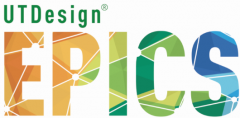November 2022
In November, we encountered issues with the overall design of the project. The design language was tricky to manipulate every time we wanted to make a change to borders, sizing, and other elements. We decided it was necessary to restructure the design of the project using a new design language. We were also able to implement several key features. Action items completed this month include:
- Implemented PDF deletion successfully
- Redesigned UI for a much cleaner user experience and more polished table view
- Finalized layout plans for the new pages to add (edit and referral views)
- Met with sponsor to get approval and feeedback on current state and direction of the project
Current action items we’re working on include:
- Get dates on referrals
- Finalize the referral page
- Finalize the edit page
October 2022
The dependency issues encountered in September have been addressed and solved. There were new difficulties with the resource book going blank when trying to edit resources, and the resource book edit behavior was not uniform across the different platforms among the team. However, these issues have been fixed, and we began focusing on implementing changes according to our list of action items. The action items completed so far include:
- Links to resource websites are live and clickable
- Readability and resizing of the resource table improved
- Column Headings no longer overlap when the window is minimized
- Functionality of adding a new resource improved
- Texas is set as the default state when entering a new resource’s address
Current action items we’re working on include:
- Formatting an edit resource book layout
- Creating the ability to delete PDFs from a resource
September 2022
In order to start implementing changes, the team needed to have appropriate development environments set up on each of their devices. We made changes to the original project build strategy so that the database was usable and editable on any operating system with less prerequisite software download requirements. Once the project was deployed, we went over a list of ideas for the semester, establishing action items as well as affirming that a server lending would not be beneficial to client or group. Once a list of UX/UI current versus expected behaviors was built, we identified source files of interest for each feature and finalized a timeline for implementing these changes. Entering October, we have just encountered an issue with running the project (due to outdated software) and are currently working to fix it.
August 2022
To ensure the whole team becomes adequate enough to edit the web application, most of the time was spent familiarizing with frameworks and technologies such as NodeJS and MongoDB. Once the team became more familiarized with the technologies, the next phase was coming up with ideas to fix issues the website has originally. We ended the month by visiting the CACCC and discussing potential changes with our project partner Lydia.



 The first form shown is our add form. The user would input the necessary data such as the resource type, name, address, hours of operation, phone number, website, and a brief summary about this resource. After they are done filling in the information, they can press the submit button to add the new resource to their records. The user can also choose view all to view all the records they have stored on the website.
The first form shown is our add form. The user would input the necessary data such as the resource type, name, address, hours of operation, phone number, website, and a brief summary about this resource. After they are done filling in the information, they can press the submit button to add the new resource to their records. The user can also choose view all to view all the records they have stored on the website.














You must be logged in to post a comment.